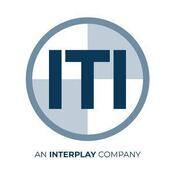Dirty Words and Phrases Associated with Load Handling Activities
This blog is an oldie but a goodie! And unfortunately, it still rings true...
We hear them all the time. In meetings. On the job site. We don’t even react. We continue to listen intently and take notes, but we don’t address it. They have become part of our everyday vernacular.
These dirty words and phrases are not the ones that George Carlin spoke about in his legendary 1972 comedy routine, Seven Words You Can Never Say on Television***. The dirty words and phrases that I speak about can have catastrophic consequences on a job site during a load handling activity if they go unchecked. Too many times I have heard:
- “Let’s try this.”
- “I think this will work.”
- “We’ll see what happens.”
- “This should work.”
- “Hey, y’all watch this!” (My personal favorite.)
When we hear these dirty words and phrases, we should stop what we’re doing and realize that we don’t have a plan and working without a plan can be dangerous and not very productive.
During the planning phase, we can use our imagination and be creative. We can think outside the box and explore new ways to handle loads. We can consider new methods and equipment that we normally don’t use. We may find safer and more efficient ways. All of this is possible during the planning phase. We do the load handling activity on paper and identify gaps. We then determine how we are going to fill or bridge the gaps, but we only do this during the planning phase.
None of the preceding paragraph should be attempted during the execution of the plan. Our plan should be so well written that personnel that are not familiar with the load handling activity can quickly be introduced and contribute. Of course, they should be qualified to do so and this should also be done as part of the planning phase.
Our plan should address the following areas:
- The Load
- The Load Handling Equipment
- The Rigging
- The Environment
- The Job Site
- The Personnel
- Unique (Site Specific) Policies and Procedures
- Possible Contingency Plans to Address the Most Probable Issues
The size of the plan should be relative to the complexity of the load handling activity.
Proper planning leads to a procedure-based execution which has fewer errors. Executing a load handling activity with knowledge-based execution requires personnel to rely upon their knowledge and experiences. It should be noted that not all experience is good experience.
Given the choice between the two, procedure-based execution driven by a well-developed plan results in a safer and more efficient execution of the load handling activity with fewer dirty words and phrases.
If you hear a litany of dirty words with regularity at your organization, it might be time to take a look at the ITI Lift Director & Critical Lift Planning Course. The three-day course will address the responsibilities of a Lift Director as identified by OSHA and ASME (P30.1 and B30.5), as well as all the steps listed above as part of a proper lift plan.
You can view the full list of upcoming ITI Training Center course dates here. Are you interested in having ITI come to you? Click here to request a quote.
***Not safe for work!




COMMENTS